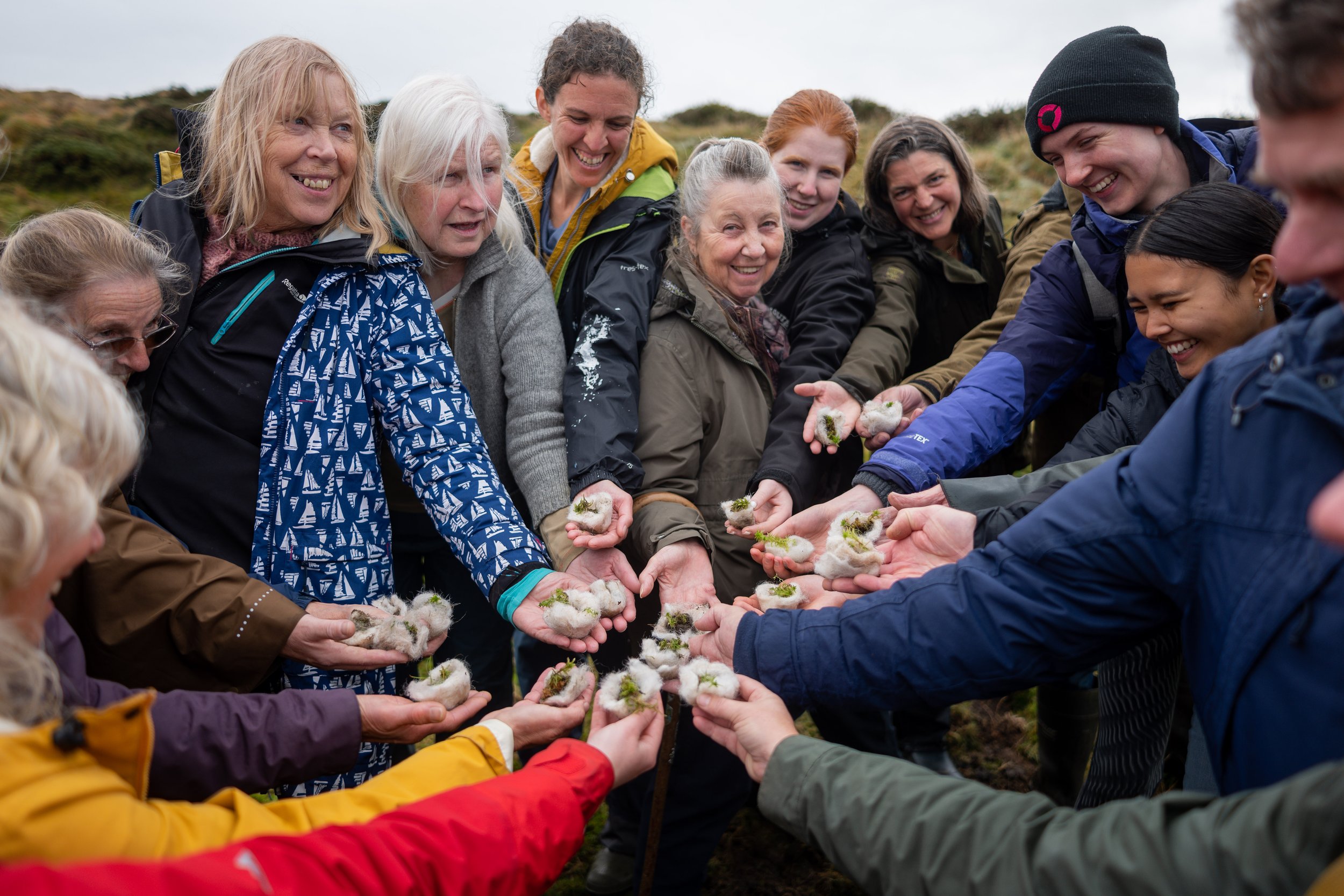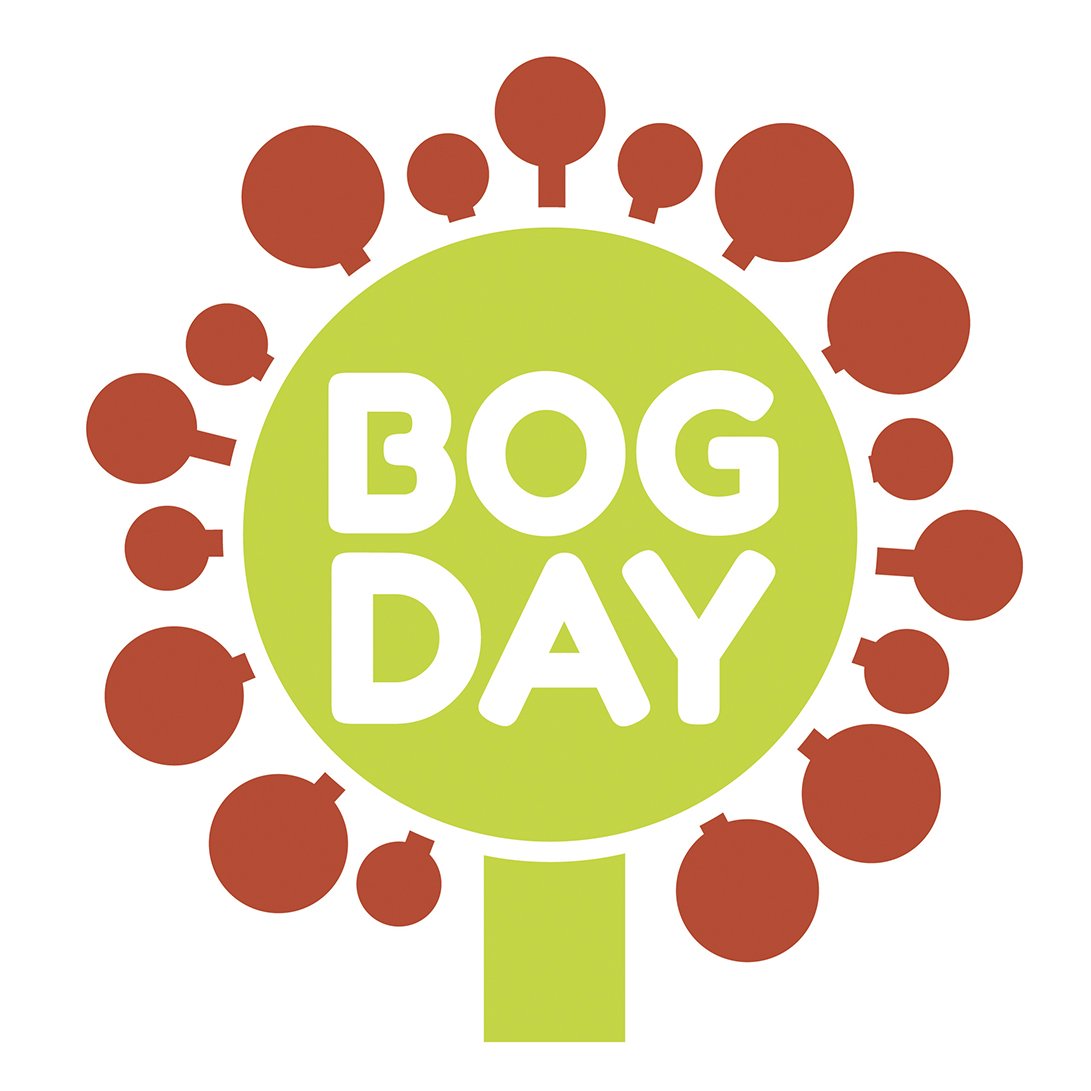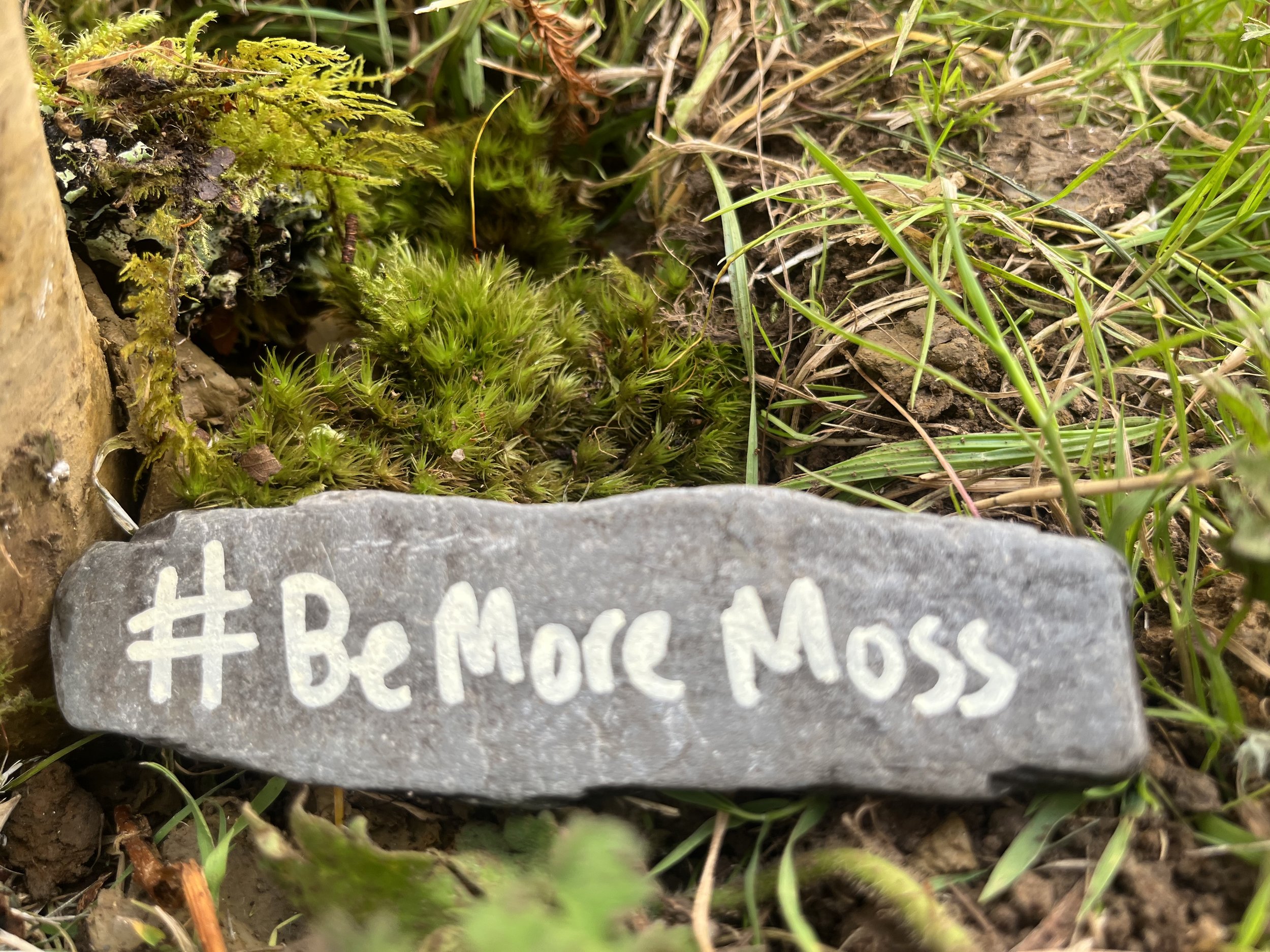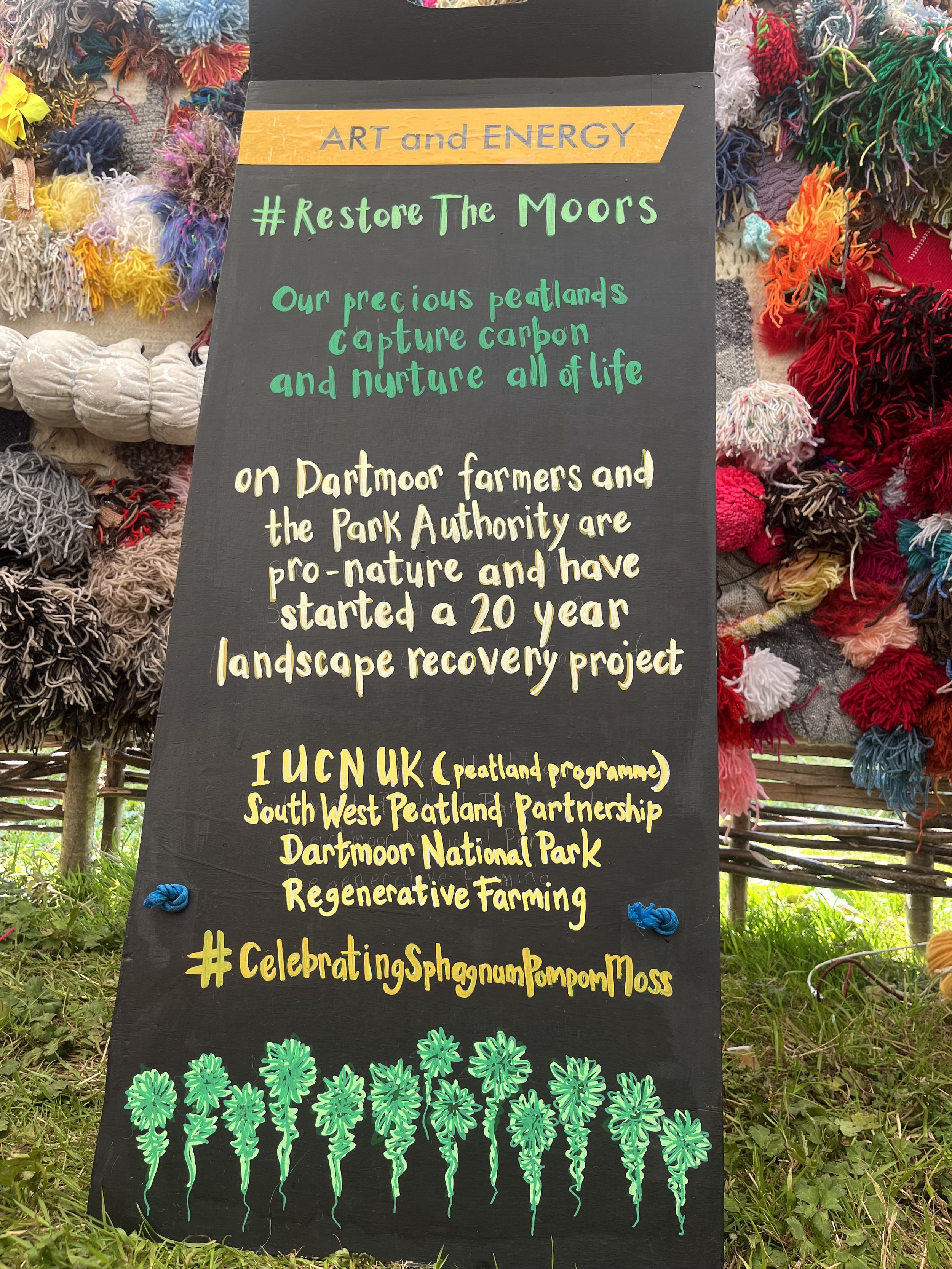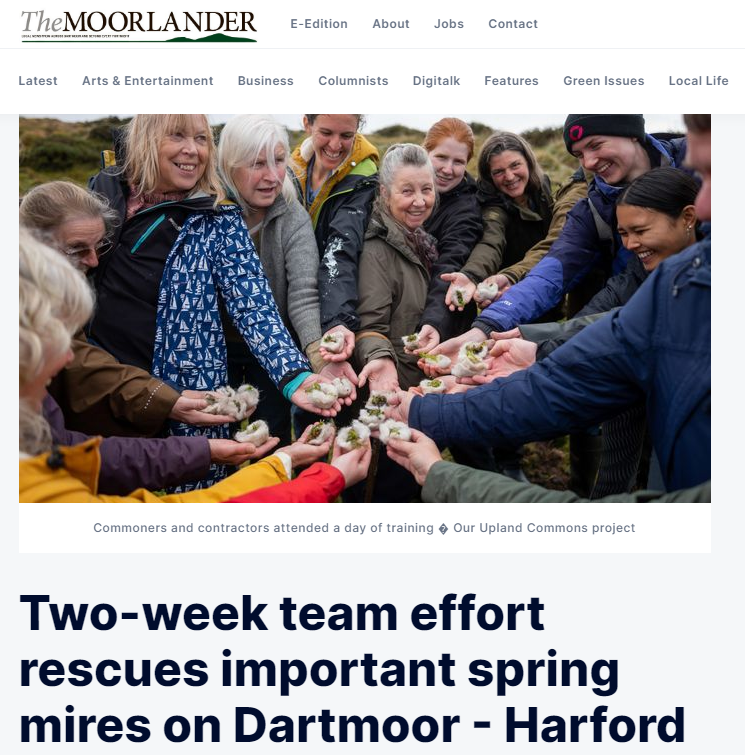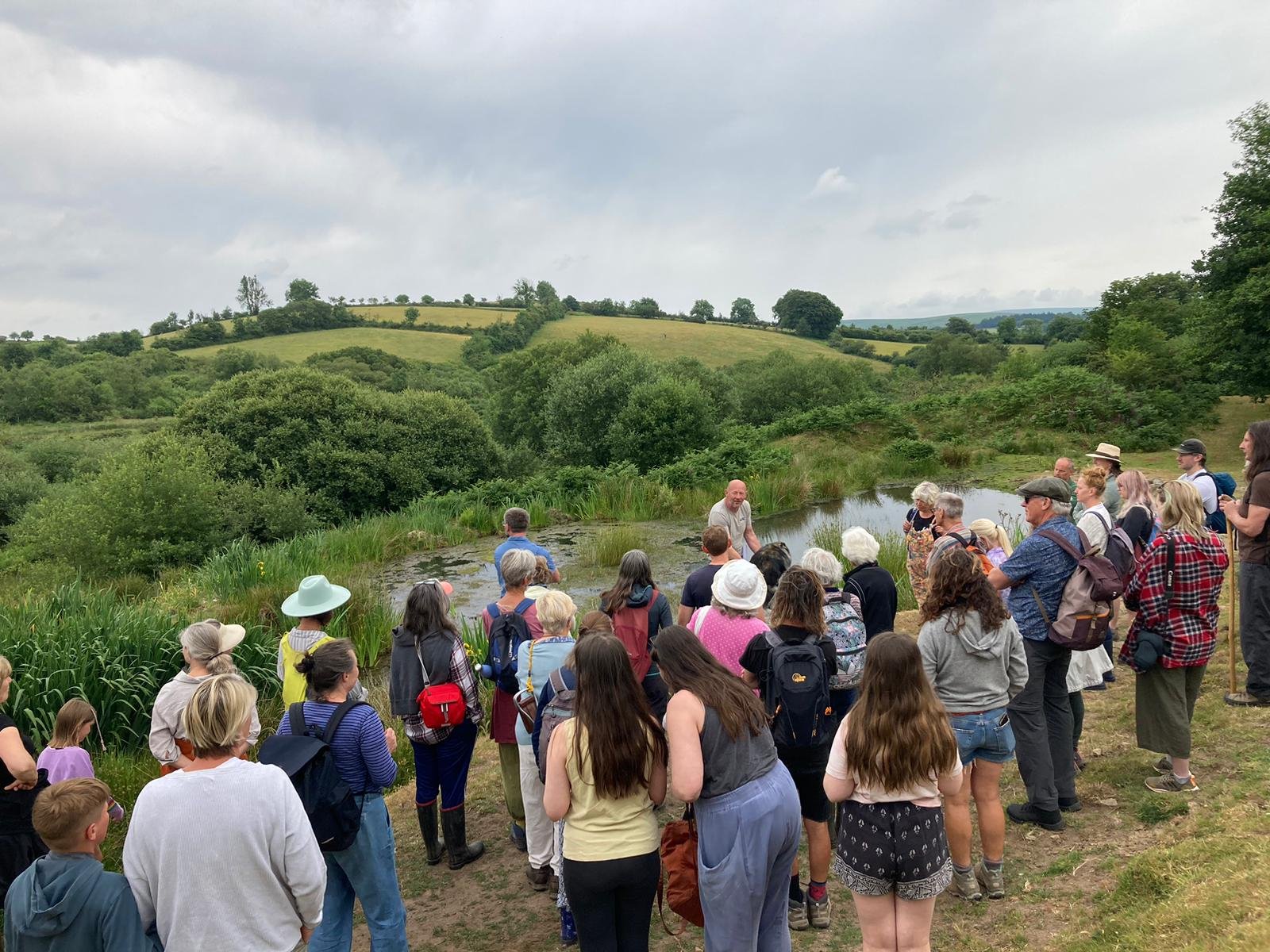
Restore the Moor: Regenerating our wild places through creativity
Our Mossy Carpet was born of Dartmoor, a landscape full of mossy carpets and blankets, giants and tardigrades. The bog pom-poms of sphagnum moss creates the peat-rich soils, and so, carbon-rich biodiverse moorland landscapes.
As we have grown to know this landscape, the more we want to help and heal it. How can we use our creativity to Restore the Moor with its mosses, peatlands, and bogs?
By understanding the role this landscape plays in energy flows, carbon sequestration and flood prevention, drinking water, biodiversity, livelihoods, and heritage we want to help support its regeneration as one of our creative responses to the climate and ecological emergency.
What is peat?
Peat is a dark and carbon rich soil made up of decaying plant matter, much of it from sphagnum moss, in waterlogged anaerobic conditions. Peatlands cover only 3% of the world’s land area, but they store more than twice the carbon found in all the world’s forests.
Why is there a need to restore the peatlands?
On Dartmoor only 1% of the deep peat is healthy. Most of the peatland has been damaged by the changes in the landscape's use over time. It has dried up and become eroded through drainage, growing food, cutting for fuel and pressure from visitors. The carbon needs to be kept underground in the peatland bogs and mires for future climate and ecological resilience.
Our metaphor, How to Bury the Giant, is all about the need to keep the Carbon Giant, the climate emergency, buried and managed so that all of life can thrive.
What do you have to do to restore peatlands?
In simple terms you can regenerate healthy bog forming peatland by raising the water levels on top of the moors to encourage the Sphagnum mosses to flourish again. You can also cover up bare and eroded areas of peat that belch out carbon dioxide and methane.
The SW Peatlands Partnership and the Upland Headwaters Project both work on Dartmoor to restore the peatlands in this way. There are farms working together to support this work too.
Other elements of restoration may help to understand and preserve the archaeology submerged in peat, some 5000 years ago. Dartmoor National Park have archaeologists who record and advise the partnerships on the work that they do to that the heritage is conserved
What have we been doing to Creatively Regenerate the Moor?
We have been experimenting and playing through the arts, with communities, and we have been making and crafting stories and metaphors, textile tufts and pompoms, poems and recorded tiny actions. Our purpose to celebrate what could be possible in the future, one in which more people care for their planet and begin to see the climate heroics of our peatlands. We have been drawing attention to the mosses on the Moor, particularly local communities who live nearby or visit the area.
With help from Devon Environment Foundation and Foundation for Common Land we have been exploring how communities could help with burying the giant!
This could be sharing a small thing we do to reduce carbon in the atmosphere by telling others while making The Mossy Carpet; or it could be in helping to keep the peatlands healthier by covering up the bare areas, or by growing or planting sphagnum moss in areas that could make a difference. Our regeneration is small scale, like the individual mosses themselves. If more communities on Dartmoor got involved, the scale of regeneration could become giant!
Growing Sphagnum in fleecy nests
With local sheeps fleece we have been making nests around stones and then planting out local sphagnum plants in small degraded areas.
We tried growing the sphagnum, in these nests as experiments. Difficult to do at home, but some growing and some translocation took place, being careful that small amounts of original moss was used, and never on areas with Special site of scientific interest or nature reserves.
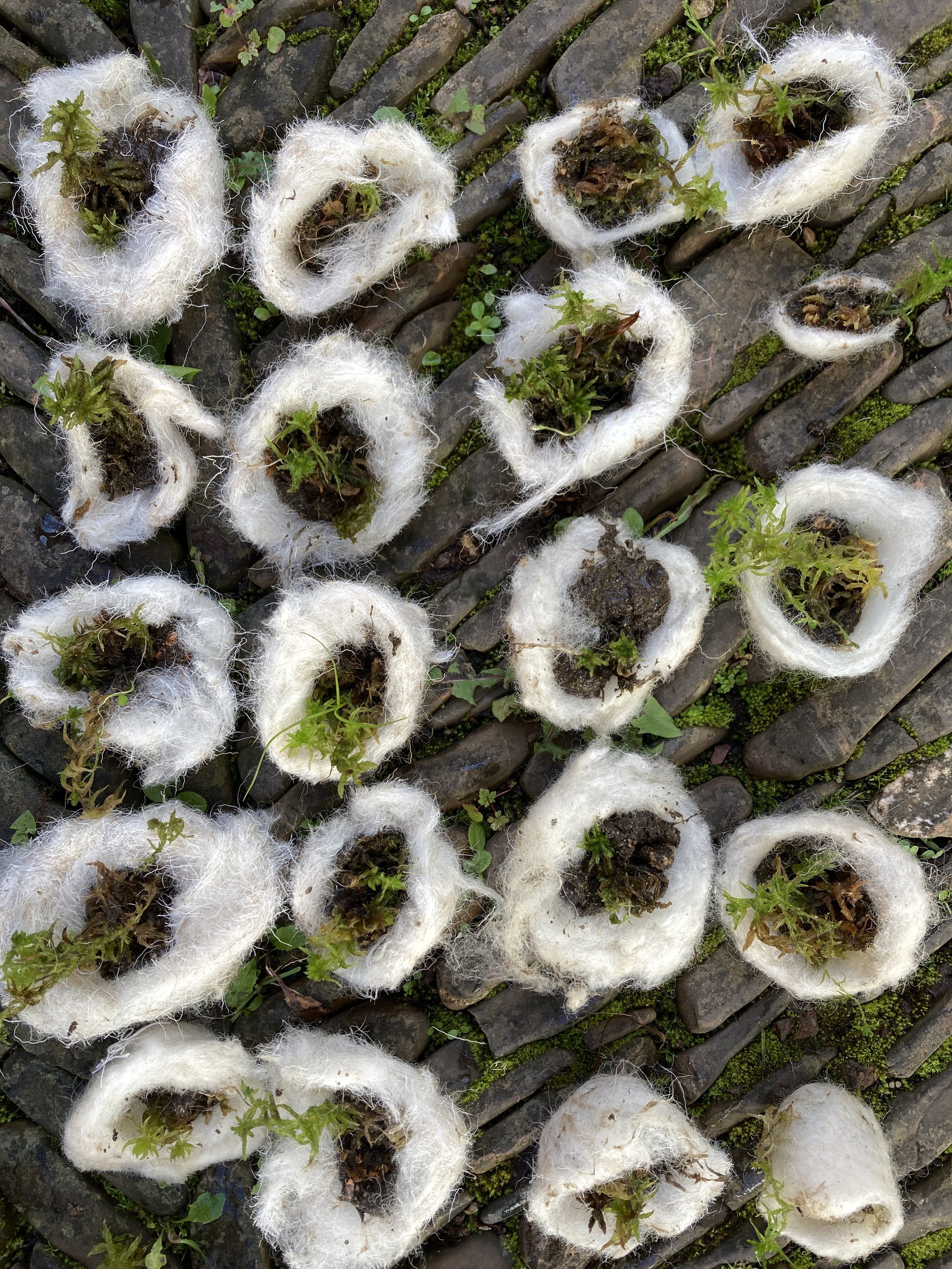


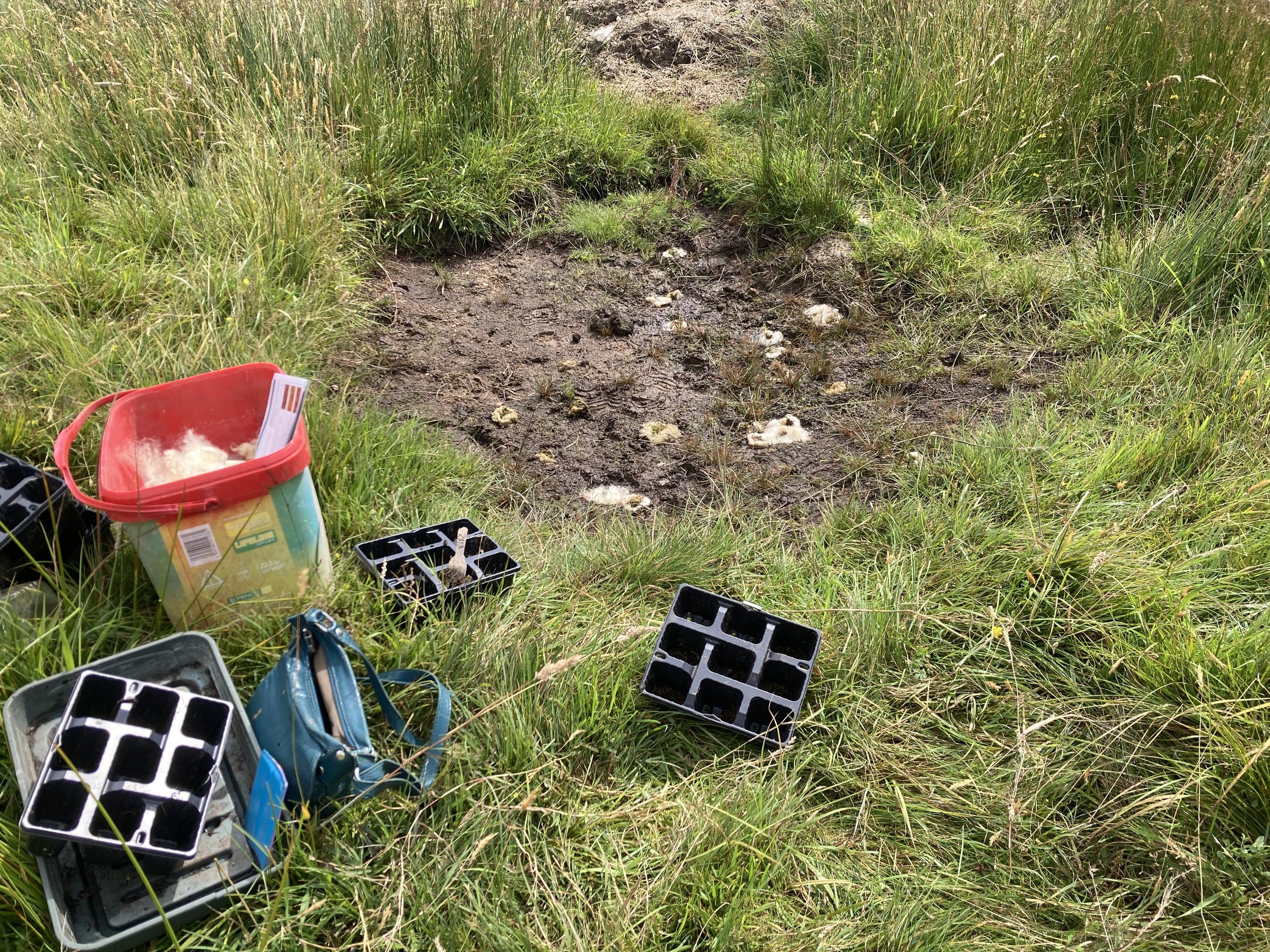
Bunds and Blankets
Dartmoor’s Headwaters Natural Flood Management project and the Hill farm project have got together to create a new fleece based felt for creating bunds that can be placed to dam streams and keep the uplands wet. Our restoration event participants have started to embroider these. We hope to involve local communities with us to leave their climate images and memories of climate conversations buried doing good for peatlands
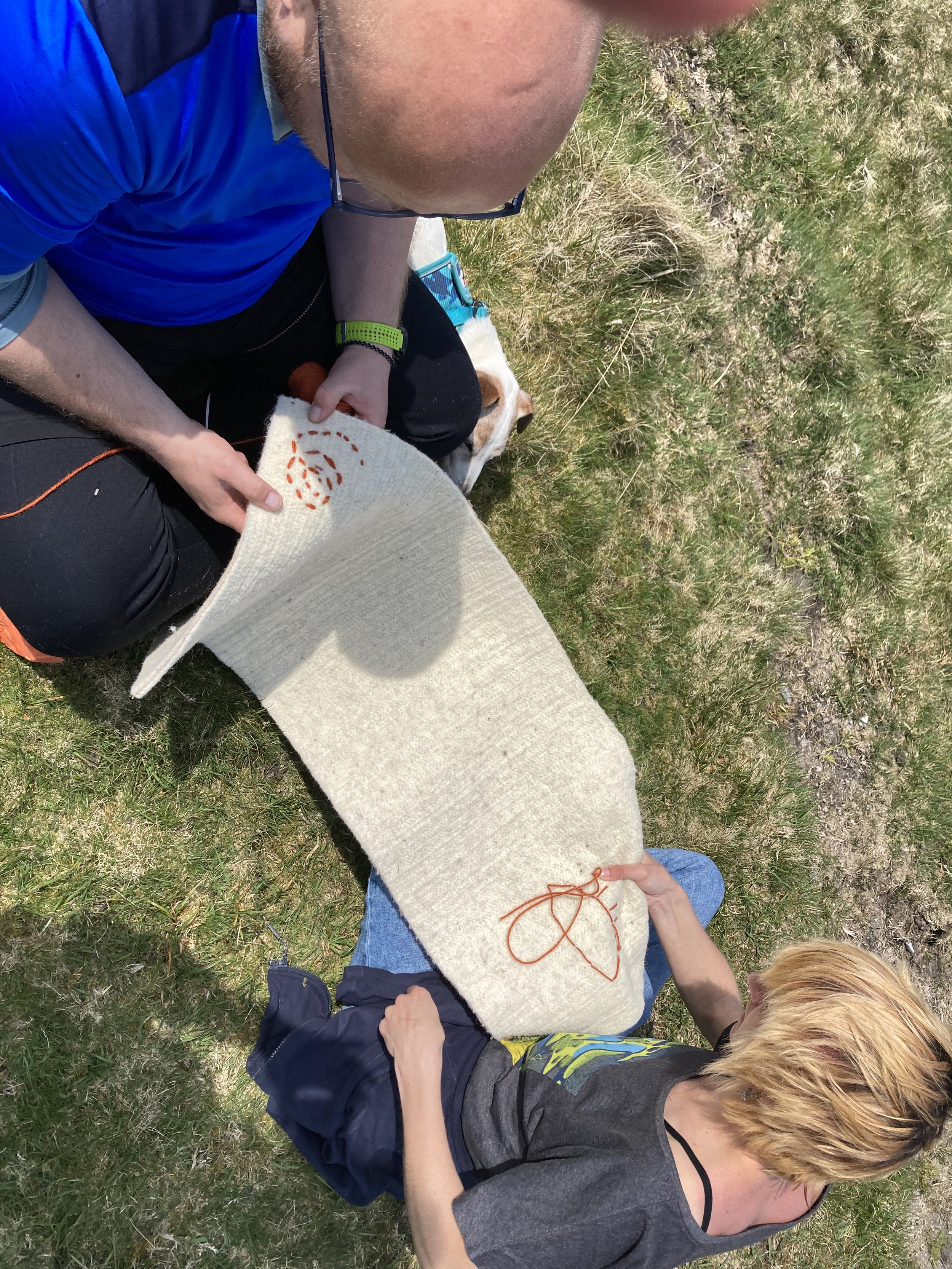
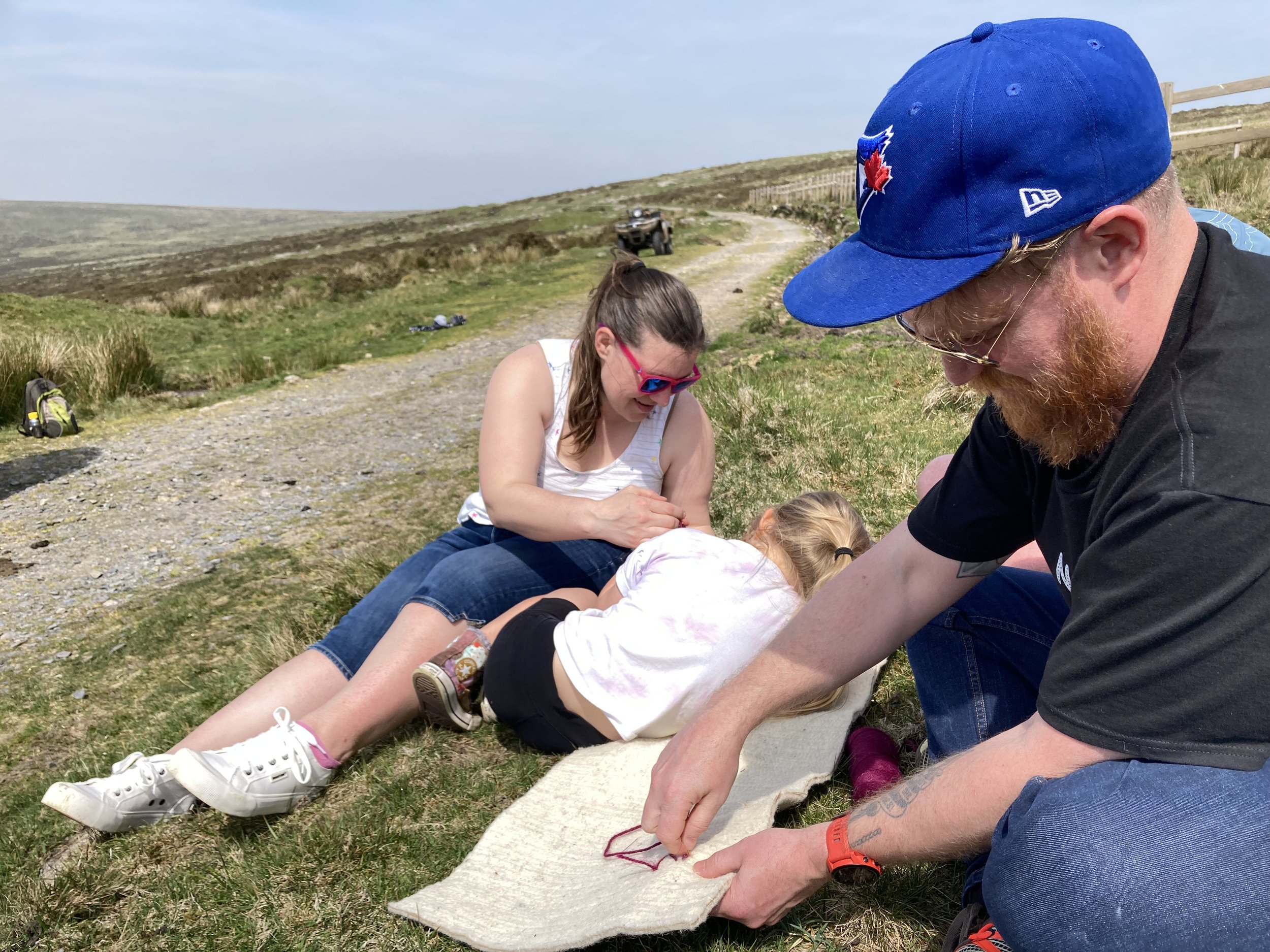

Growing sphagnum on the fleece blankets
We have started growing experiments to see whether sphagnum moss will grow on the fleece blankets to be placed over small bare areas of peat. We embroider an image first and then create a sort of sphagnum paint, or we mush up sphagnum into small pieces and create the conditions for it to grow.
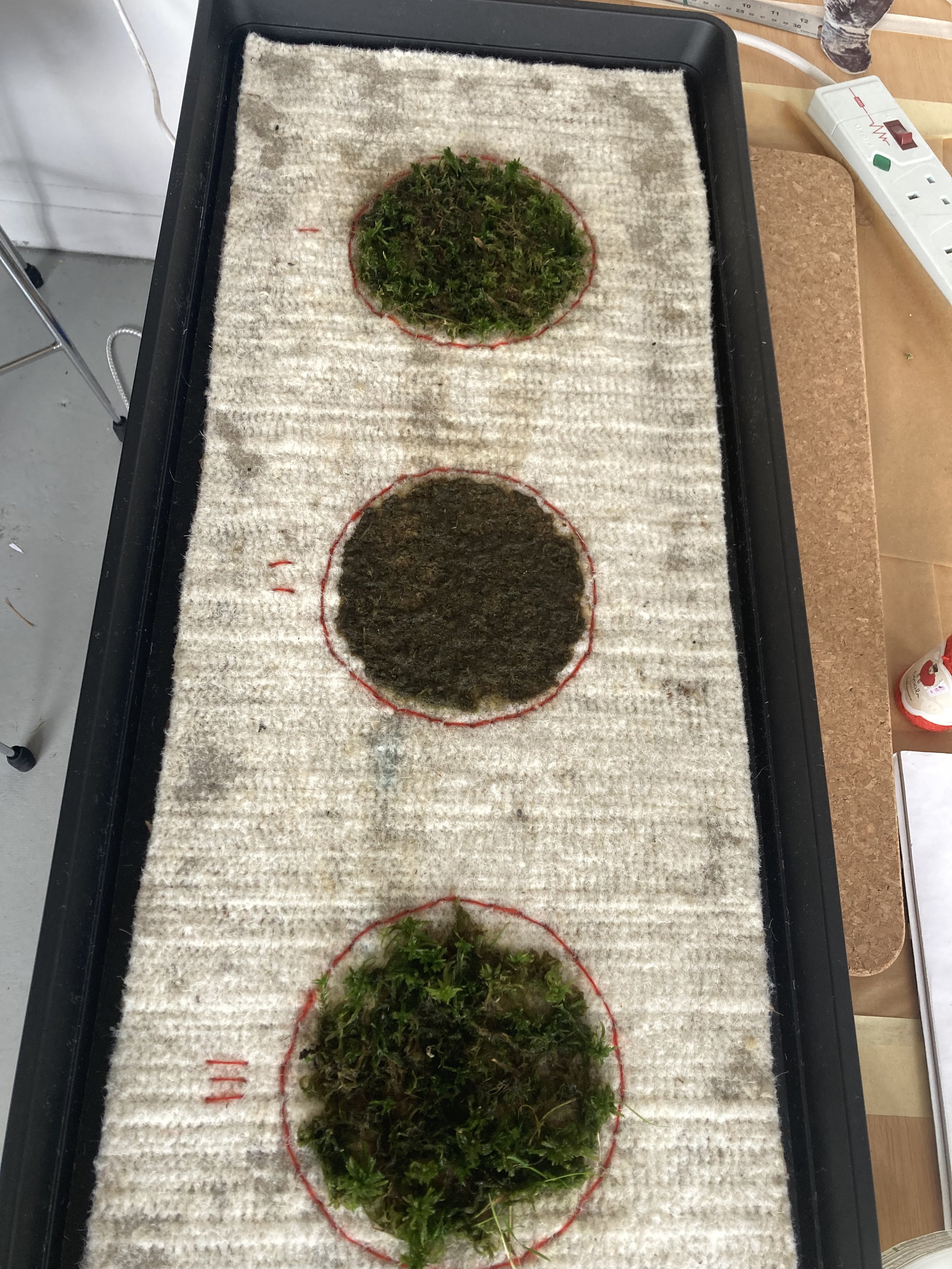

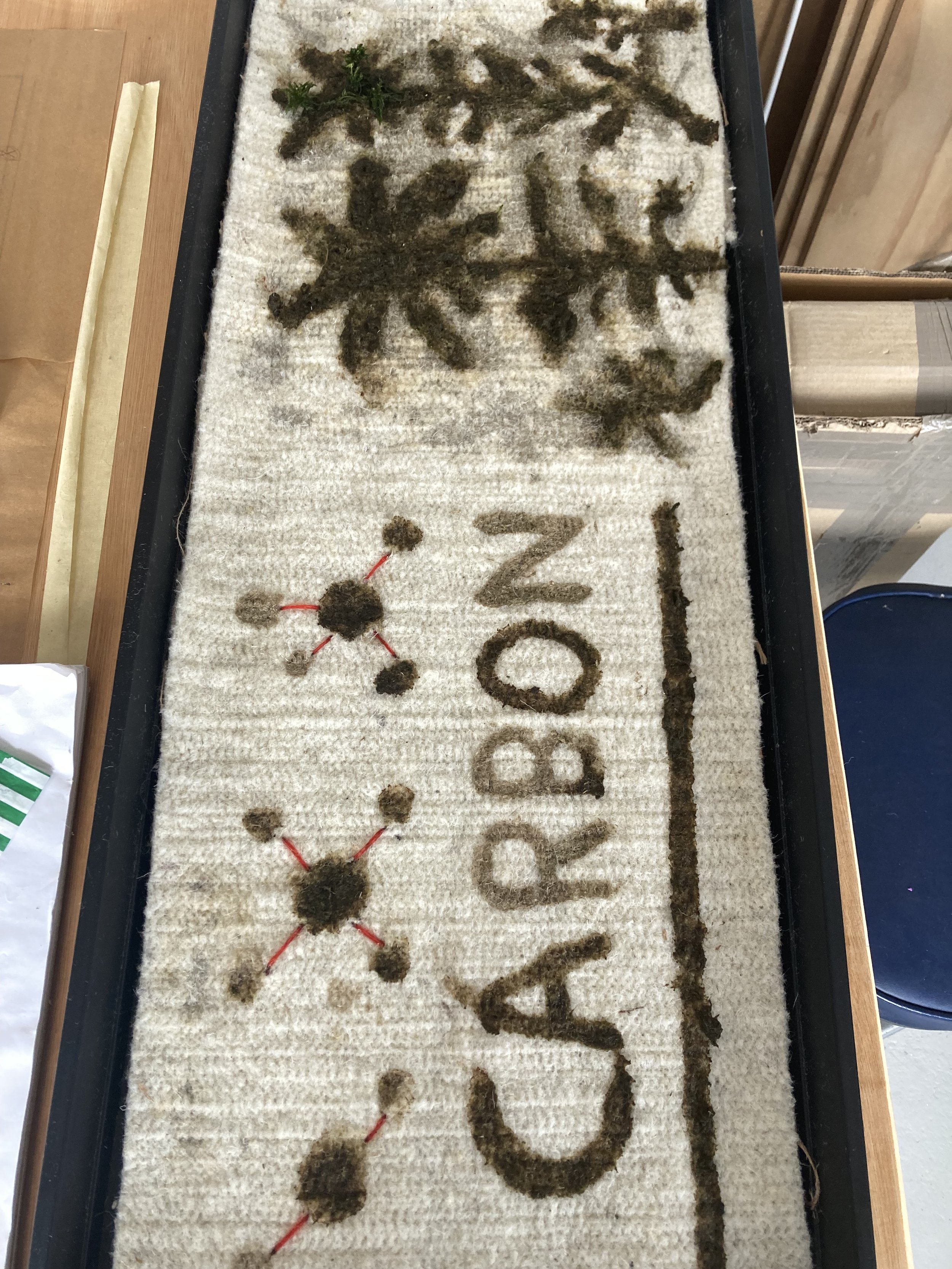

Then we plant these fleece blankets out in small bare areas.
We will be testing these methods out a little more ‘scientifically’ with help from a school in Plymouth, some communities and a University Lab. Watch this space. If you are interested in embroidering a bund or helping out with this let us know.




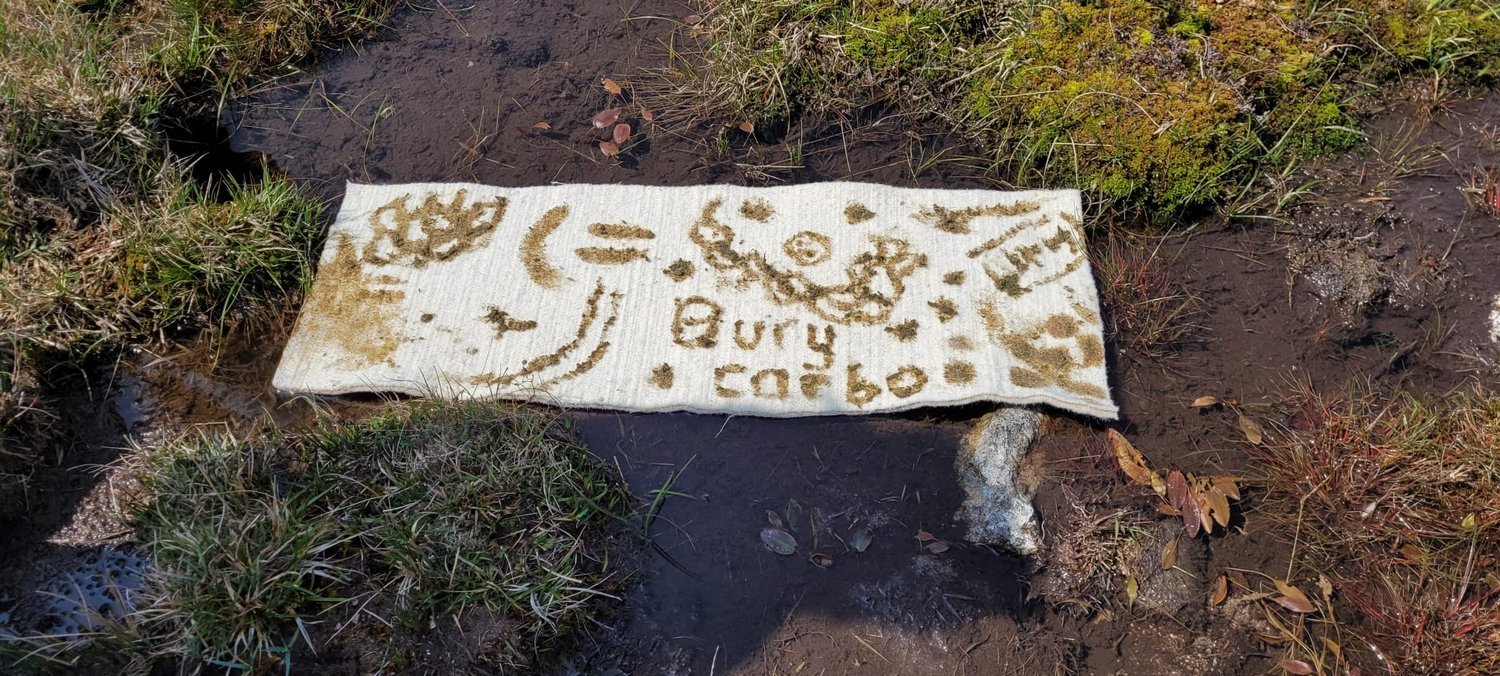
Creative engagement and Impact
We are really interested in the impact creative engagement and restoration has.
Does it encourage more people to do more in response to the climate emergency?
Does it make a tangible difference to the Moor, or with those that take part?
We want to set up a group of researchers and others who are interested in this area of our work to build better understanding of the outcomes. Please get in touch if you want to be involved.
More about Peat
Volunteering to improve peatland habitats on Dartmoor
If you this has inspired you to look further into getting out on the moor and doing some practical work to help then you can look at these links and contact these organisations to help:
Dartmoor National Park volunteers: https://www.dartmoor.gov.uk/about-us/volunteering, and various organisations linked.
SW Peatland Partnership: https://southwestpeatlandpartnership.co.uk/workwithus
Devon Wildlife Trust: https://www.devonwildlifetrust.org/take-action
National Trust: https://www.nationaltrust.org.uk/support-us#volunteer
Discover more about Peatlands across the UK by looking at the work of IUCN Peatland ProgrammeUK.
Find out what Peatland restoration is happening at the larger scale across the South West by looking up the SW Peatland Partnership.



Join us for our Restore the Moor events:

